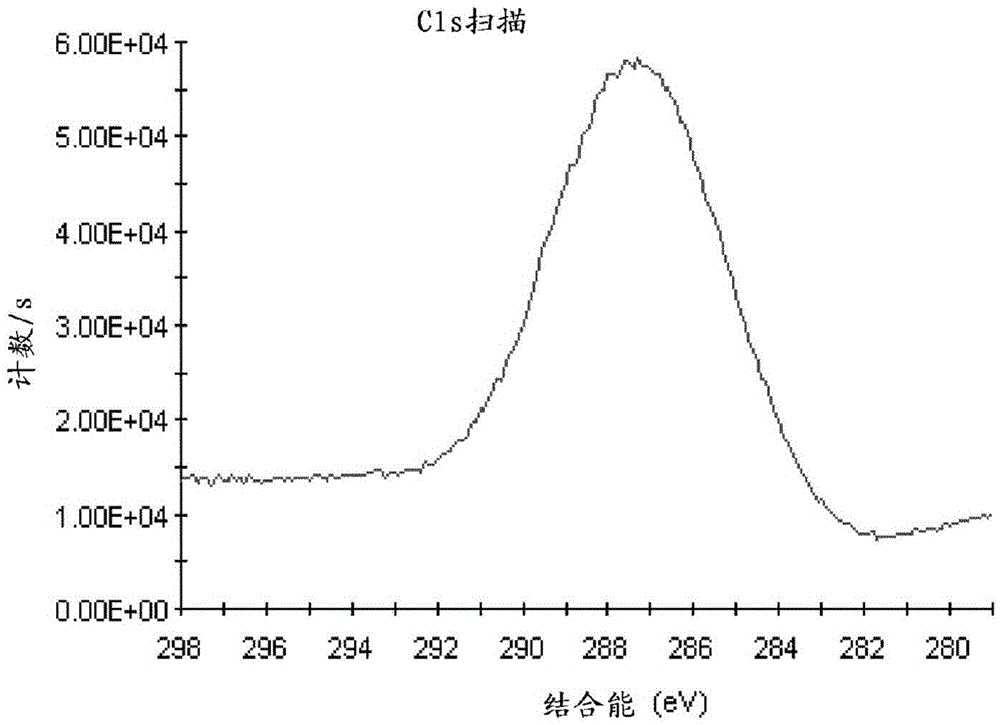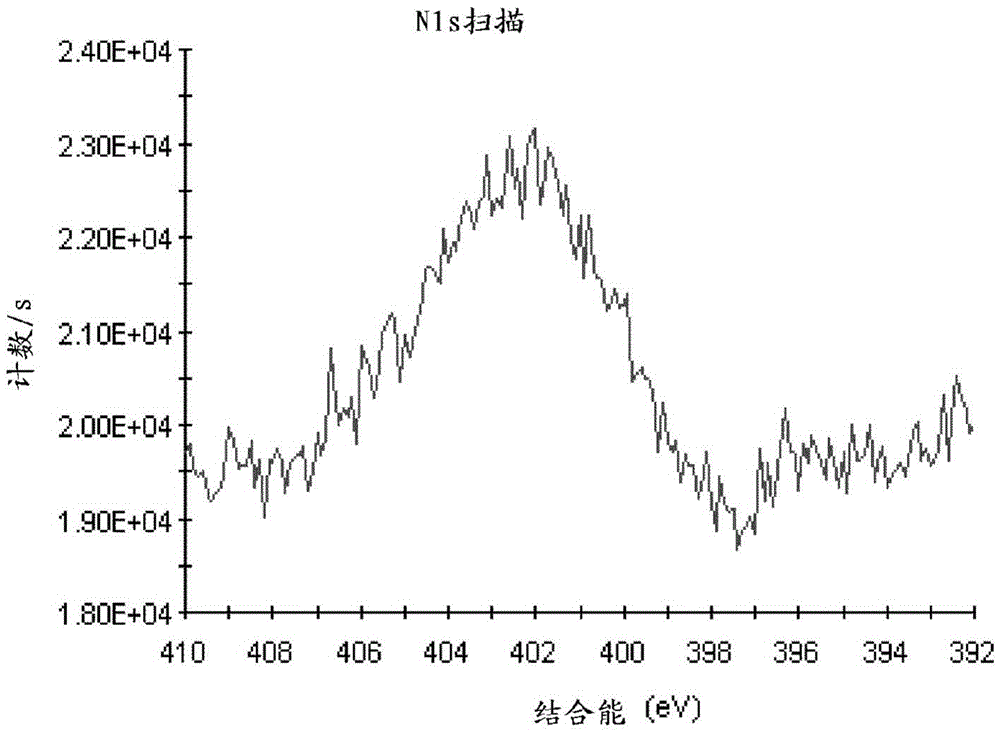Modified polyaryletherketone (PAEK) polymer and method for obtaining the same
A polyaryletherketone and polymer technology, applied in the field of modified polyaryletherketone polymer and its obtaining, can solve the problems of reduced serum concentration, inactivation, inactivation of RGD peptide and the like
- Summary
- Abstract
- Description
- Claims
- Application Information
AI Technical Summary
Problems solved by technology
Method used
Image
Examples
Embodiment 1
[0109] Example 1: Dense PEEK, Porous PEEK and PEEK Surface Modified to Oxime
[0110] The pristine dense PEEK-A exhibited a contact angle of 84.1°±5.0 (Table 2) and a fluorescence of 192 (Table 3). The surface XPS analysis recorded at room temperature was C86.4%, O13.6% for pristine dense PEEK-A and C84.3%, O15.7% for mechanically polished dense PEEK-M (Table 4).
[0111] PEEK porous samples (PEEK-P) were prepared having a trimodal pore distribution with an average pore diameter of 120 μm to 180 μm interconnected by voids between adjacent pores of about 5 μm to 70 μm and exhibiting a mean diameter of 5 μm to 10 μm or Surface with smaller pore distribution. For this PEEK-P material, the measured contact angle value was 117.8°±1.0 (Table 2), and the fluorescence was 129.2 (Table 3). Surface XPS analysis: C78.2%, O21.8% (Table 4).
[0112] Densified PEEK materials and porous PEEK materials surface-modified with oximes were prepared according to the method described in Macrom...
Embodiment 2
[0116] Example 2: PEEK surface modified to azide. According to the material of the first aspect of the present invention, wherein R 1 =- CH 2 CH 2 -;X=N 3
[0117] 2-(p-Toluenesulfonyloxy)ethylazide: 2-Azidoethanol (2.5 g, 28.8 mmol) was added to pyridine ( 15 mL) and the mixture was stirred at this temperature for 24 hours. Then, add CH 2 Cl 2 (30mL) with NH 4 Cl and water wash solution. The organic phase was separated and dried (MgSO 4 ) and evaporated to give a colorless oil (5.6 g yield, 78%).
[0118] 1 H-RMN (500MHz, CDCl 3 ): δ7, 80 (d, 2H, Ar), 7, 40 (d, 2H, Ar), 4, 25 (t, 2H, OCH 2 ), 3, 50(t, 2H, NCH 2 ), 2, 50 (s, 3H, CH 3 ).
[0119] Under a nitrogen atmosphere, the dense PEEK-A oxime sample and the porous PEEK-P oxime sample (n=10 in each group) prepared as described in Example 1 were introduced into a mixture containing potassium carbonate (1.38 g, 10 mmol), 2-(p-toluene A mixture of sulfonyloxy)ethyl azide (1 g, 4 mmol) and acet...
Embodiment 3
[0122] Example 3: PEEK surface modified to maleimide. According to the material of the first aspect of the present invention, wherein R 1 =- CH 2 CH 2 -; X = N-maleimide
[0123] N-(2-p-toluenesulfonyloxyethyl)maleimide-furan ring adduct: N-(2-hydroxyethyl)maleimide furan ring adduct (0.5 g, 2.4 mmol) and p-toluenesulfonyl chloride (0.72 g, 3.8 mmol) were introduced into a spherical flask and dissolved in dichloromethane (40 mL). Then, pyridine (1.5 mL, 18 mmol) was added and the mixture was stirred at room temperature for 24 hours. Then, the solvent was evaporated and washed with NaHCO 3 The product was washed with saturated solution (20 mL×2) and HCl 1M solution (20 mL×2). Then, the product was dissolved in dichloromethane and allowed to evaporate. Yield: 587 mg, (67%).
[0124] 1 H-RMN (500MHz, CDCl 3 ): δ7, 79 (d, 2H, Ar-CH), 7, 36 (d, 2H, Ar-CH), 6, 54 (s, 2H, CH=CH), 5, 27 (s, 2H, CH ), 4, 22(t, 2H, CH 2 ), 3, 77 (t, 2H, CH 2 ), 2, 88 (s, 2H, ...
PUM
| Property | Measurement | Unit |
|---|---|---|
| diameter | aaaaa | aaaaa |
| diameter | aaaaa | aaaaa |
| contact angle | aaaaa | aaaaa |
Abstract
Description
Claims
Application Information
 Login to View More
Login to View More - R&D
- Intellectual Property
- Life Sciences
- Materials
- Tech Scout
- Unparalleled Data Quality
- Higher Quality Content
- 60% Fewer Hallucinations
Browse by: Latest US Patents, China's latest patents, Technical Efficacy Thesaurus, Application Domain, Technology Topic, Popular Technical Reports.
© 2025 PatSnap. All rights reserved.Legal|Privacy policy|Modern Slavery Act Transparency Statement|Sitemap|About US| Contact US: help@patsnap.com



